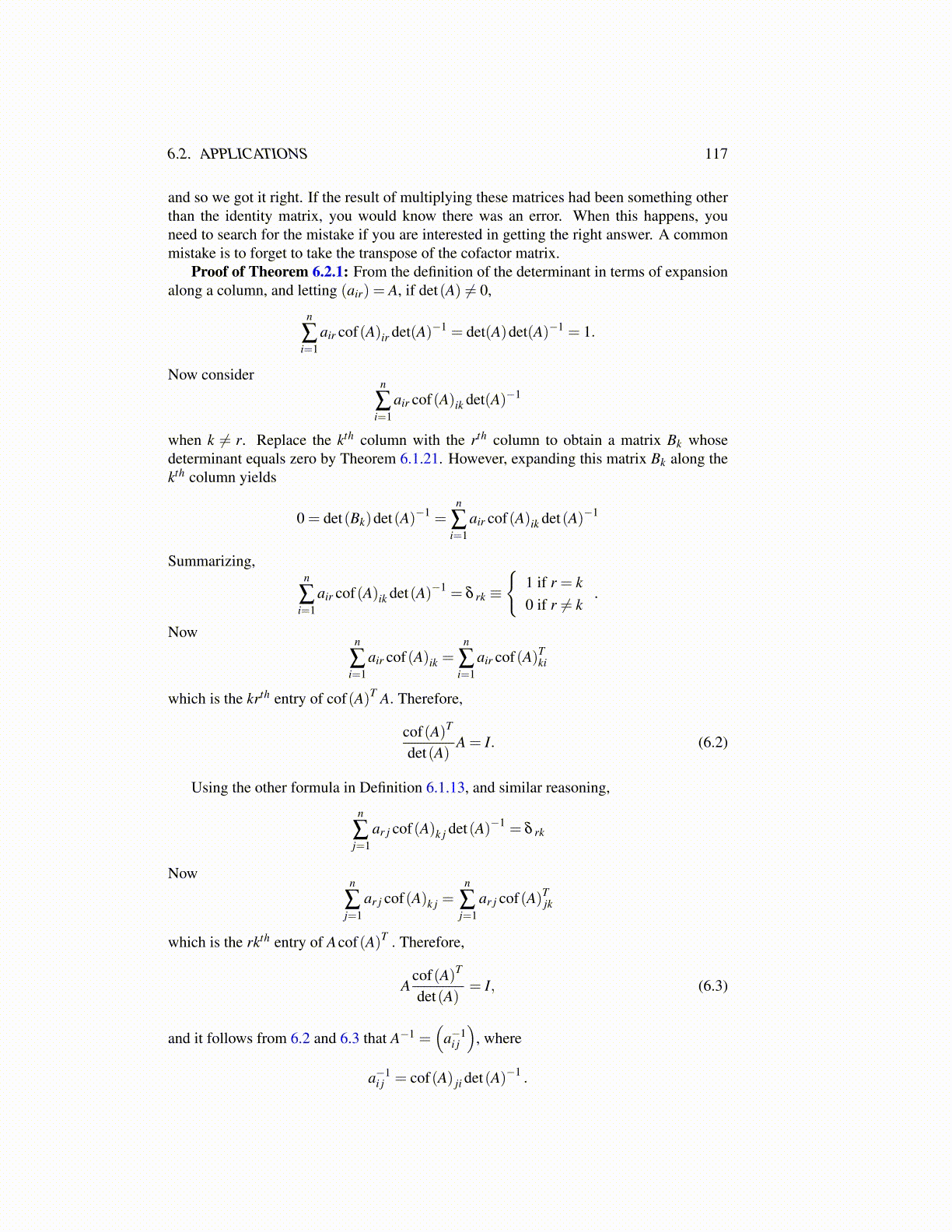
6.2. APPLICATIONS 117
and so we got it right. If the result of multiplying these matrices had been something otherthan the identity matrix, you would know there was an error. When this happens, youneed to search for the mistake if you are interested in getting the right answer. A commonmistake is to forget to take the transpose of the cofactor matrix.
Proof of Theorem 6.2.1: From the definition of the determinant in terms of expansionalong a column, and letting (air) = A, if det(A) ̸= 0,
n
∑i=1
air cof(A)ir det(A)−1 = det(A)det(A)−1 = 1.
Now considern
∑i=1
air cof(A)ik det(A)−1
when k ̸= r. Replace the kth column with the rth column to obtain a matrix Bk whosedeterminant equals zero by Theorem 6.1.21. However, expanding this matrix Bk along thekth column yields
0 = det(Bk)det(A)−1 =n
∑i=1
air cof(A)ik det(A)−1
Summarizing,n
∑i=1
air cof(A)ik det(A)−1 = δ rk ≡
{1 if r = k0 if r ̸= k
.
Nown
∑i=1
air cof(A)ik =n
∑i=1
air cof(A)Tki
which is the krth entry of cof(A)T A. Therefore,
cof(A)T
det(A)A = I. (6.2)
Using the other formula in Definition 6.1.13, and similar reasoning,
n
∑j=1
ar j cof(A)k j det(A)−1 = δ rk
Nown
∑j=1
ar j cof(A)k j =n
∑j=1
ar j cof(A)Tjk
which is the rkth entry of Acof(A)T . Therefore,
Acof(A)T
det(A)= I, (6.3)
and it follows from 6.2 and 6.3 that A−1 =(
a−1i j
), where
a−1i j = cof(A) ji det(A)−1 .